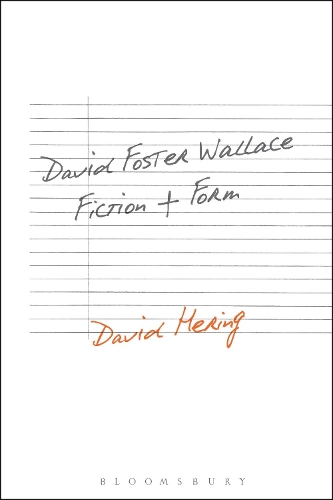
David Foster Wallace: Fiction and Form
(Paperback)
Available Formats
Publishing Details
David Foster Wallace: Fiction and Form
By (Author) Dr. David Hering
Bloomsbury Publishing PLC
Bloomsbury Academic USA
18th May 2017
United States
Classifications
Tertiary Education
Non Fiction
Literary studies: fiction, novelists and prose writers
813.54
Physical Properties
Paperback
216
Width 152mm, Height 229mm
316g
Description
In David Foster Wallace: Fiction and Form, David Hering analyses the structures of David Foster Wallace's fiction, from his debut The Broom of the System to his final unfinished novel The Pale King. Incorporating extensive analysis of Wallace's drafts, notes and letters, and taking account of the rapidly expanding field of Wallace scholarship, this book argues that the form of Wallaces fiction is always inextricably bound up within an ongoing conflict between the monologic and the dialogic, one strongly connected with Wallaces sense of his own authorial presence and identity in the work. Hering suggests that this conflict occurs at the level of both subject and composition, analysing the importance of a number of provocative structural and critical contexts ghostliness, institutionality, reflection to the fiction while describing how this argument is also visible within the development of Wallaces manuscripts, comparing early drafts with published material to offer a career-long framework of the construction of Wallaces fiction. The final chapter offers an unprecedentedly detailed analysis of the troubled, decade-long construction of the work that became The Pale King.
Reviews
Theres a chapter devoted to Wallaces evolving articulation of voice, of space and of vision, respectively. Taken individually, these three chapters deepen our appreciation of Wallaces work and its development. Taken together, they provide Hering with grounds for specifying, in the final chapter, just how incomplete the published version of The Pale King can be taken to be. * Organization *
Quality as well as quantity characterize the scholarship in David Herings David Foster Wallace: Fiction and Form. Hering is comprehensive in treating the authors work from four complementary perspectives: vocality, spatiality, visuality, and finality. * American Literary Scholarship *
Since the death of David Foster Wallace, we have been waiting for a comprehensive study of his literary career, its trajectory and achievements. Through in-depth study of Wallaces published works and extensive archive, David Hering brilliantly anatomizes the authors writing via themes of vocality, visuality and spatiality. The books final chapter, a forensic reconstruction of the drafting process for The Pale King, tells a whole new story of Wallaces creative life over his final years. An exhilarating read for fans and scholars alike, David Foster Wallace: Fiction and Form represents the most significant step forward in Wallace studies for at least a decade. * Adam Kelly, Lecturer in American Literature, University of York, UK, and author of American Fiction in Transition *
David Hering offers a highly insightful study of questions of vocality (specifically, analyzing possession as a model for authorial presence), spatiality (discussing regionalism and institutionality) and visuality (that is, modelling different forms of reflection and refraction) in the work of David Foster Wallace. Subsequently, these questions are connected to a revelatory chronology of the composition of Wallaces unfinished novel The Pale King, making Herings monograph invaluable reading for all scholars interested in the development of Wallaces fiction. * Allard den Dulk, Lecturer in Philosophy, Literature and Film, Amsterdam University College, and Humanities Research Fellow, VU University Amsterdam, The Netherlands, and author of Existentialist Engagement in Wallace, Eggers and Foer *
Author Bio
David Hering is Lecturer in English at the University of Liverpool, UK.
